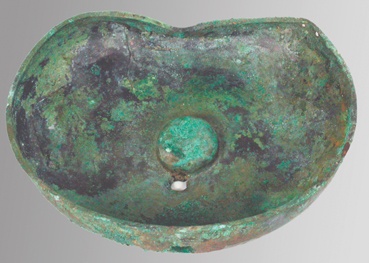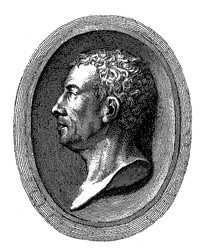Die runde Schale wurde nach der charakteristischen eiförmigen Erhebung, dem sog. Omphalos (griechisch: Nabel), in ihrem Zentrum benannt. Sie ist unverziert, flach geformt und hat keinen Standring. Der Rand ist nach innen umgeschlagen und gibt der dünnwandigen Schale so mehr Stabilität, denn das Bronzeblech hat nur eine Wandstärke von ca. 0,5 mm. Knapp 1 cm unter dem Schalenrand sind diametral gegenüberliegend je zwei 2 mm große Löcher im Abstand von 12 bzw. 16 mm angebracht. Vielleicht dienten sie dazu, die Schale an einer Schnur aufzuhängen.
Die Schale gehört zu den zahlreichen unverzierten Bronzeschalen, deren Typ sich über einen langen Zeitraum gehalten hat. Sie wird in das 6.-4. Jh. v. Chr. datiert und aus dem ostgriechischen Raum stammen.
en

